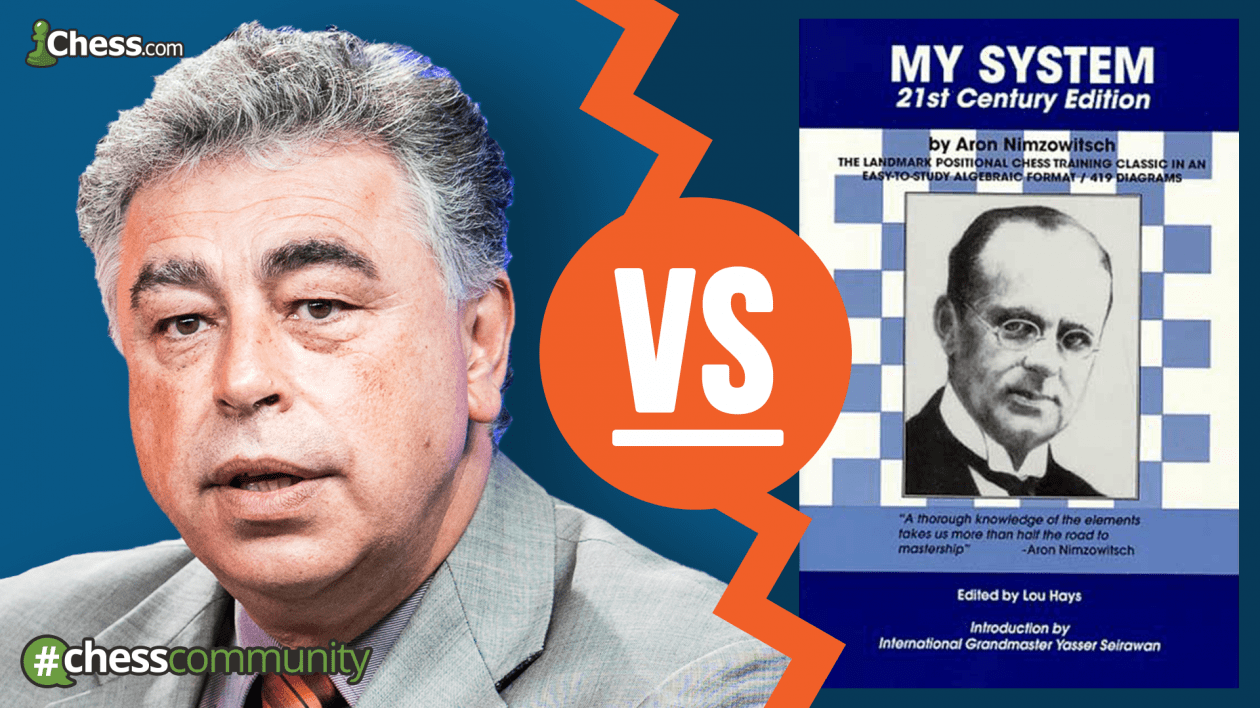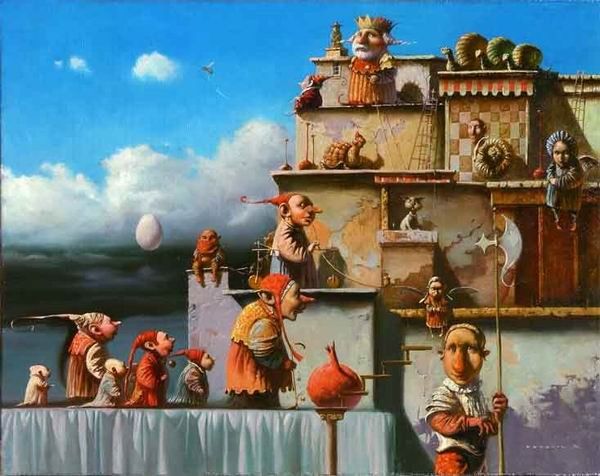
GM Seirawan - Radovic Debate on Nimzovich, Part 1
How Chess Theory and Praxis Coexist and Interact
A Reply to GM Seirawan's Open Reply to my Open Letter
Most respected four-time US chess champion, dear GM Seirawan,
Your open reply to my open letter has certainly attracted a great deal of attention and interest within the chess community lately. It is a rare opportunity to see how an elite Grandmaster communicates the value of and judges the merits of general chess ideas, in particular those expounded by Nimzovich in My System.
Human history is in essence a history of ideas (H. G. Wells). Yet, truly creative ideas suddenly stopped coming. Hence the worrying question, do giant technological advances signify a death of ideas?
Ideas matter, now more than ever (as, clearly, metal dummies are fully unable to generate them), so this is a great occasion for the chess community to talk ideas ("children of philosophy").
I am certainly far from underestimating the merit of your reply as a finest exposition of the ideas of centralization and blockade. I have also tremendously enjoyed your elaboration on prophylaxis, notably the grand "two options" idea on freedom of action.
I have to say that I am very glad that you corrected your initial extreme position on Nimzovich. Suddenly, you are talking ideas, you are a thinker, not a mere technician.
After I was kind of relieved by it, you start on overprotection and, pretty distressingly, I hear, again, a serious allegation, "Lastly, overprotection. Simply garbage." (highlight is mine)
Once more, a very grievous accusation, that requires facts proportionate to prove it.
All in all, you must pardon me for saying that, with the best possible intention, I cannot find anything in your reply that could stand as an answer to, or a refutation of, or the slightest threat to the worthiness of Nimzovich's My System that he left for the posterity.

Betty Ollier-Lopez aka Miss Boll, Chess Heads
What our debate is not about
Before we go any further take on ideas, we should all agree on about what lies outside the scope of our dispute on ideas:
1. Nimzovich's egotism
2. Liking or disliking Nimzovich should be also disregarded as we make an attempt to fairly appraise Nimzovich's contribution to the development of modern chess theory.
At this juncture, I think that it is pivotal for us to recognize and define the role ideas have in the formation of our beliefs and actions in chess. It will, at the same time, set the right foundation for the rest of our conversation on ideas. Without it, we would simply talk at cross purposes.
Ideas. A definition
Ideas represent a mental 'tool kit' meant to help us understand how things hang together at the chessboard in the most general terms.
The reality around us is infinitely complex. The question is, how we navigate in such a confusing and seemingly disorderly chess world? How do we know our way around? We will see how the mind uses surprisingly simple ideas to find its way in the labyrinth of chess.
IDEA : n. a mental construct of which existing things are imperfect representations.
The definition expresses what Wilfrid Sellars calls a clash between two distinct conceptual frameworks, the subjective, or theoretical view, and the objective, or "scientific" view of the world.
Theoretical view
It is an abstract at the highest level of thinking that serves us as a mental map to give direction (something we call strategy). It is a framework in terms of which we ordinarily observe and explain our chess world.
Not only do ideas help us better understand reality, but they always suggest the aim, purpose, or a possible course of action as well.
The theoretical image is not fixed; it is a conceptual structure that can be criticized, supported, refuted, in short, evaluated, and consequently refined.
Some of these conceptual objects are basic, while some are constructs, compounds.
"Like the highly playful child with a pailful of Legos, [chess Masters] are constantly combining and recombining ideas, images and thoughts into different combinations in their conscious and subconscious minds." (CreativityPost)
This manipulation of ideas and thus created mental network is in fact how a chess player is thinking during a game.
Basic and complex chess ideas
Here are some basic ideas, the idea that chessmen possess striking power, the functional relationships between pieces (there are only four of them, as per GM Averbakh, attack, restriction, protection, interposition), looking for targets, concentration of force, centralization, prevention of freeing pawn moves, etc.
Here are a few big ideas, figuring out the opponent's intentions (Sun Tzu formulates this idea as "the best strategy is to fight the enemy's strategy").
Once we come to understand the opponent's plan, the idea of prevention comes to the fore; we want to restrain the other side's potentially harmful activity by using blockade, or launching a counterattack;
What matters most in a position is another big idea (Schwerpunkt, as per Carl von Clausewitz), the idea that is closely connected with overprotection (=safeguarding the most valuable assets), and so on, and on.
Scientific view
The practical aspect of chess is your favorite (I know it for sure), of the two chess worlds.
The "scientific image" of chess grows out of and is methodologically posterior to the theoretical image, which provides the initial framework in which the "science" of chess is nurtured.
In physics, for example, the "scientific image" deals with the basic entities like subatomic particles, fields, forces, and so on; in chess, we deal with how chessmen move, rules for castling, en-passant, stalemate, specific tactical procedures, etc. All these technicalities slowly construct a new framework that claims to be a complete and exact description and explanation of chess and its processes.
Now the big question is, is it possible to reconcile these two distinct worlds in which we conceive chess? And which of the two is more important, having prevalence over the other? We will take on this in Part 2 (of this, I have to confess, a little bit lengthy reply to your reply to the open letter).
Until then, Yours sincerely in Caissa,
Momir Radovic
Atlanta, Georgia
@chesscontact on Twitter
Further reading:
GM Seirawan vs GM Nimzovich Battle Over Ideas, Part 2
My reply to GM Seirawan's challenge on Nimzo's folly: 2.d3 then 3.d4, Part 3
